NATO Military Committee
The North Atlantic Treaty Organisation Military Committee (NATO MC) is the body of NATO that is composed of member states' Chiefs of Defence (CHOD). These national CHODs are regularly represented in the MC by their permanent Military Representatives (MilRep), who often are two- or three-star flag officers. Like the Council, from time to time the Military Committee also meets at a higher level, namely at the level of Chiefs of Defence, the most senior military officer in each nation's armed forces.
| NATO Military Committee | |
|---|---|
| Allegiance | |
| Location | Brussels, Belgium |
| Website | NATO.int |
| Commanders | |
| Secretary General | Jens Stoltenberg |
| Chairman | Air Chief Marshal Sir Stuart Peach |
| Deputy Chairman | Lt Gen Steven Shepro |
| Director General of the International Military Staff | Lieutenant General Hans-Werner Wiermann |
| Insignia | |
| Chairman's arms |  |
| Deputy Chairman's arms | 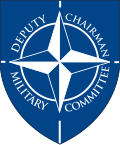 |
| International Military Staff's arms | 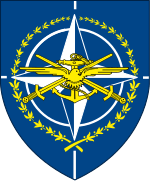 |
| International Military Staff's flag | 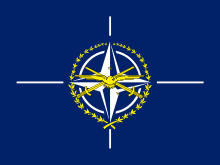 |
Role

The MC assists and advises the North Atlantic Council (NAC), Defence Planning Committee, and Nuclear Planning Group on military matters including policy and strategy.[1] Its principal role is to provide direction and advice on military policy and strategy. It provides guidance on military matters to the NATO Strategic Commanders, whose representatives attend its meetings, and is responsible for the overall conduct of the military affairs of the Alliance under the authority of the Council. The executive body of the MC is the International Military Staff (IMS).[2] The NATO Military Command Structure consists of two strategic commands directed by the North Atlantic Council:[3]
- Liaison: Provides advice and support to the NAC
| Political strategic level: | |||||||||||||||||||
| NATO SG (NAC) Brussels, BE | IS Brussels, BE | ||||||||||||||||||
| Military strategic level: | |||||||||||||||||||
CMC (NATO MC) | |||||||||||||||||||
 SACEUR (ACO, SHAPE) Mons, BE | 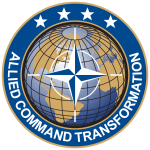 SACT (ACT, HQ SACT) Norfolk, US | ||||||||||||||||||
| Operational level: | |||||||||||||||||||
History
Until 2008 the Military Committee excluded France, due to that country's 1966 decision to remove itself from NATO's integrated military structure, which it rejoined in 1995. Until France rejoined NATO, it was not represented on the Defence Planning Committee, and this led to conflicts between it and NATO members. Such was the case in the lead up to Operation Iraqi Freedom.[4]
Established in 1949 during the first Council session in Washington, the Military Committee is NATO's highest military authority and advises the NAC and NATO's strategic commanders, the Supreme Allied Commander Transformation and the Supreme Allied Commander Europe.[5]
- Arms of historical NATO commands
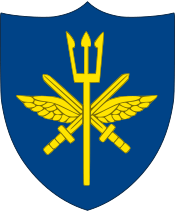 Allied Command Atlantic
Allied Command Atlantic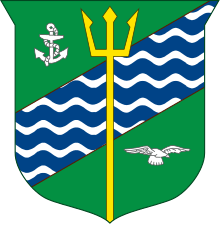
.svg.png) Allied Command Europe (Supreme Headquarters)
Allied Command Europe (Supreme Headquarters)
See also
References
- NATO Handbook, 50th Anniversary Edition, 1998-99, 234.
- International Military Staff, Jun 15, 2017, retrieved Feb 20, 2018.
- "Command Structure" (PDF). NATO. Retrieved 19 October 2019. and "Military Command Structure". shape.nato.int. Supreme Head Allied Powers Europe. 12 February 2020. Retrieved 12 February 2020.
- Fuller, Thomas (18 February 2003). "Reaching accord, EU warns Saddam of his 'last chance'". International Herald Tribune. Archived from the original on 12 October 2007. Retrieved 15 July 2007.
- https://www.nato.int/cps/en/natolive/topics_49633.htm, NATO Military Committee, Dec 7, 2017, retrieved Feb 15, 2018.